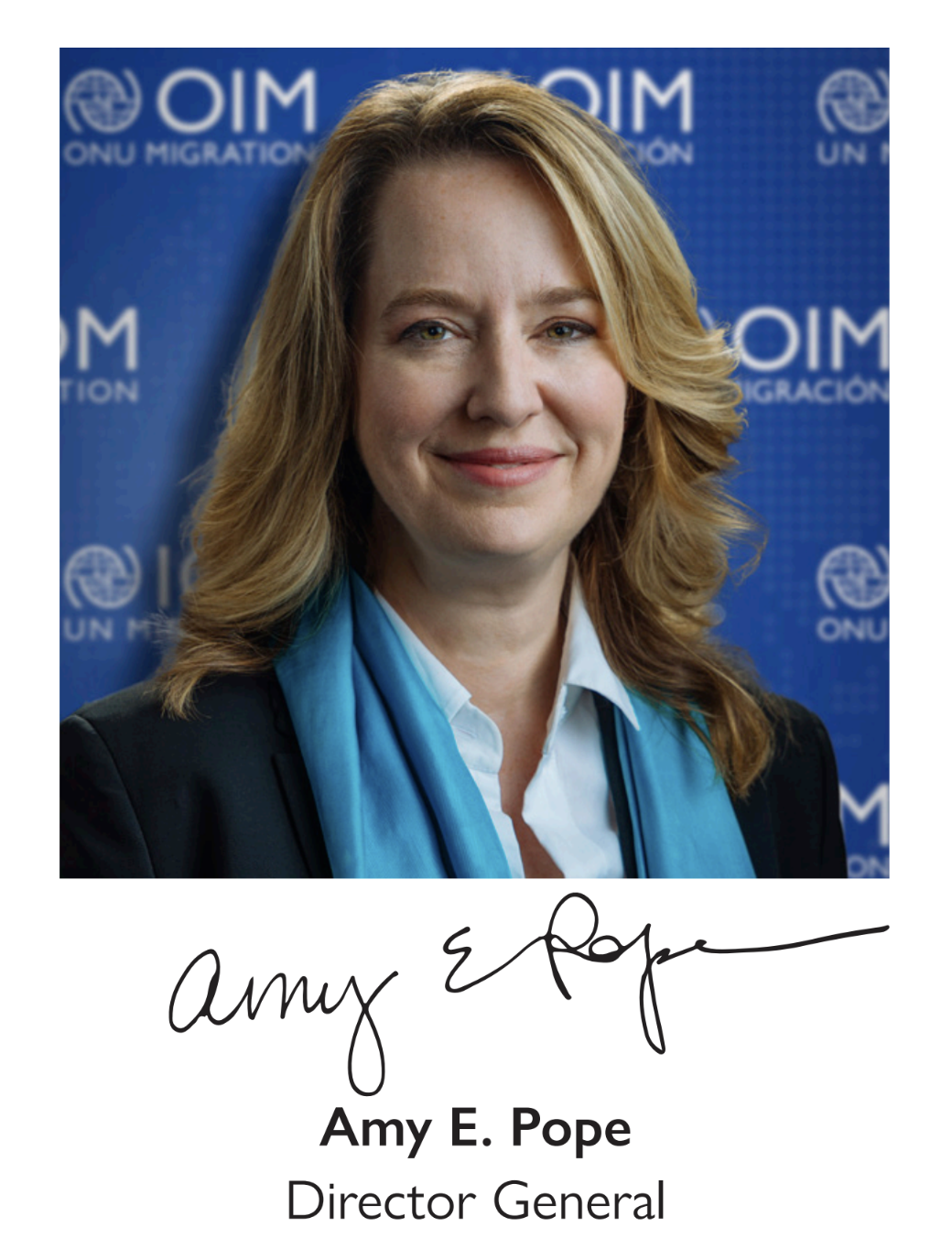Foreword
Foreword
Migration is as old as humanity itself. Throughout history, people have migrated in search of better lives, to flee conflict or seek safety, or simply to find new opportunities. It may surprise people that most migration is regular, safe and orderly – regionally focused and often directly connected to work. What captures attention in headlines is just part of the story. Migration is an issue that has been deeply affected by misinformation and politicization, and dominant narratives have strayed far away from balanced, accurate accounts of migration – both its simple truths and its complex situation-specific realities.
That is why the central aim of IOM’s flagship World Migration Report series is to set out in clear and accurate terms the changes occurring in migration and mobility globally so that readers can better understand changes and adapt their own work. As the United Nations migration agency, IOM has an obligation to demystify the complexity and diversity of human mobility through evidence-based data, research and analysis.
The report also acknowledges IOM’s continuing obligation to uphold fundamental rights and its mission to support those migrants who are most in need. This is particularly critical in the three areas in which IOM places high priority outlined in IOM’s new Strategic Plan 2024–2028: Saving lives and protecting people on the move; Driving solutions to displacement; and Facilitating pathways for regular migration.
The current United Nations estimate is that there are about 281 million international migrants in the world, which equates to 3.6 per cent of the global population. But increasing numbers of people are being displaced, within and out of their country of origin, because of conflict, violence, political or economic instability as well as climate change and other disasters. In 2022, there were 117 million displaced people in the world, and 71.2 million internally displaced people. The number of asylum-seekers has risen from 4.1 million in 2020 to 5.4 million in 2022, an increase of more than 30 per cent.
Many people are locked out of regular pathways, as highlighted in chapter 4 of this report, and they sometimes resort to irregular channels that are extremely hazardous. These channels get significant media attention, and their use often undermines confidence in governance and fuels a twisted narrative that is being weaponized around the world for short-term political gain.
This report presents key global and regional migration data and trends, along with relevant thematic issues. Because we know that specific audiences, including policymakers, media, researchers, teachers and students, have varying needs when using this report to inform their work, this World Migration Report also includes an expanded range of digital tools to help ensure that it can be as useful for as wide a range of people as possible.
These innovations continue a proud history for the World Migration Report, which has won multiple international awards. More important than the awards, though, is the fact that the World Migration Report contributes to the global discourse about migration. That is always our goal – to inform global audiences about the robust evidence base that supports our work. We trust the contents and tools will help dispel myths, provide key facts and analysis, and offer new knowledge about the complex migration landscape. We also hope that the World Migration Report inspires new ideas on how you can be part of a bigger agenda, one that helps ensure migration is leveraged effectively as a solution to human development, peace and prosperity throughout the world.
The phrase “Knowledge is Power”, was first used by philosophers in the sixteenth century. In this age of instant news, web conspiracies and sophisticated political narratives, it is as relevant as ever. Through this edition of the World Migration Report, we seek to shape the conversation on migration around data, facts and truth – that way, we can tell the whole story.
